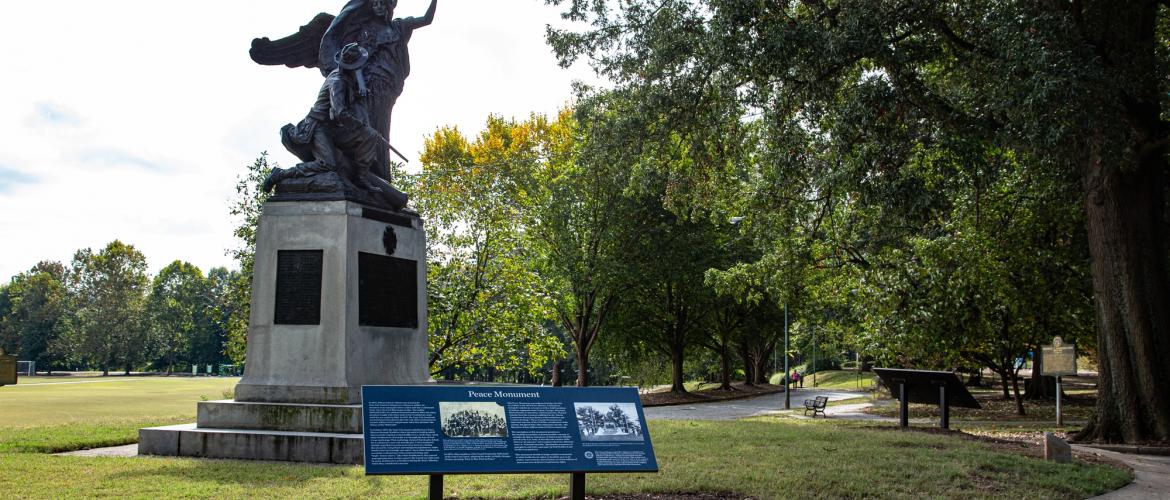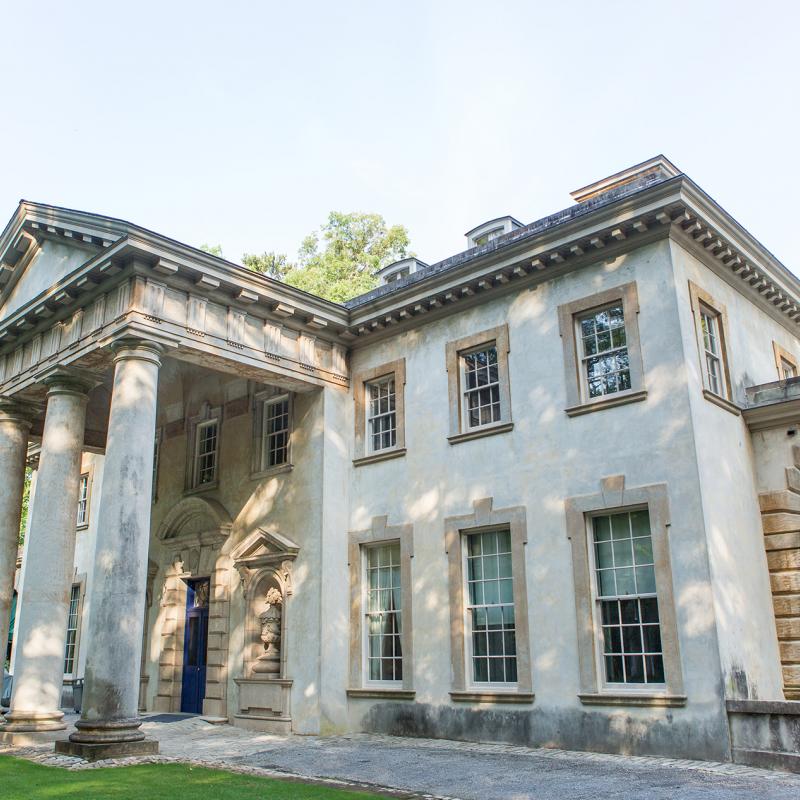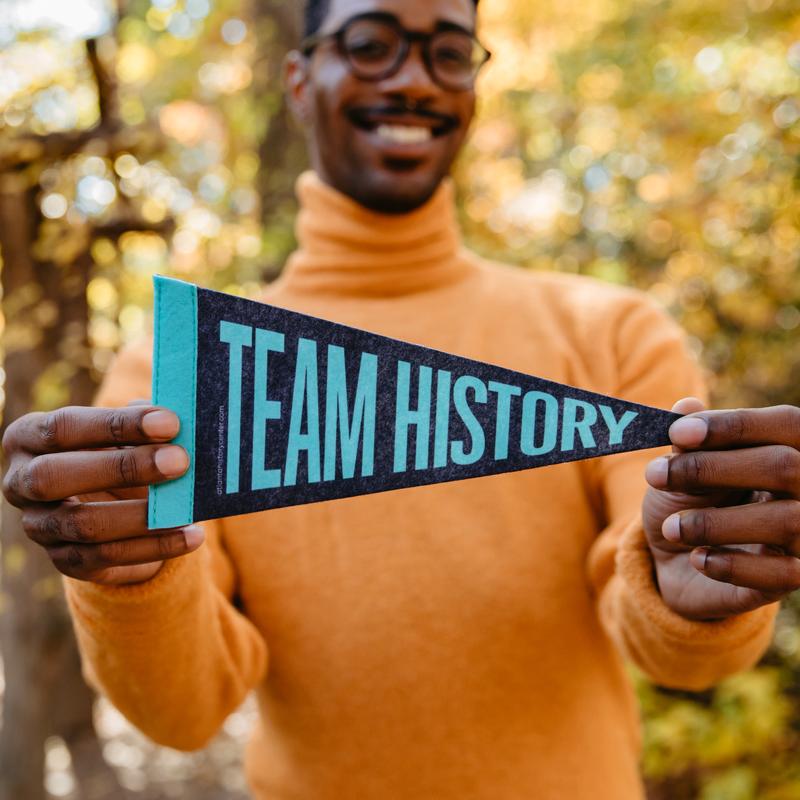
Case Study: Confederate Monuments and Street Names in Atlanta, Georgia
Following violence in Charlottesville, Virginia, in August 2017, then-Atlanta Mayor Kasim Reed announced the formation of an advisory committee. The Advisory Committee on City of Atlanta Street Names and Monuments Associated with the Confederacy was co-chaired by Atlanta History Center CEO Sheffield Hale and Center for Civil and Human Rights CEO Derreck Kayongo. It was tasked with making recommendations for a variety of monuments on city property and street names throughout Atlanta. Members of the advisory committee were appointed by both Mayor Reed and the Atlanta City Council.
The committee had four public meetings to discuss the future of Confederate monuments and street names and released a full report outlining research and recommendations.
Process:
Research
City of Atlanta committee staff conducted research on all street names under consideration, working to identify, when possible, the origin of the street name. Atlanta History Center staff, meanwhile, researched the monuments under consideration using a variety of archival and online sources. The monument interpretation template was used as a guide. City staff conducted additional research on the civic organizations that commissioned the various monuments as well as legal considerations facing the City. All this research was presented by city staff at the advisory committee meetings, which were open to the public. A summary of the research is in the committee’s full report.
Public Comment
Each meeting began with a public comment period so that interested community members could express their thoughts and opinions. Meetings were televised for anyone unable to attend in person. Public comment was also accepted through a City email address; these comments were distributed to members of the committee and posted online by City staff prior to the final meeting.
Recommendations
A summary of the recommendations of the committee is in the full report. In summary, the committee recommended contextualizing two monuments, removing two monuments to City storage, altering the street renaming process, and renaming certain streets immediately.
Implementation of the recommendations was delegated to a City Council subcommittee in July 2018 consisting of Council members Natalyn Archibong, Michael Julian Bond, and Carla Smith. The first recommendation to be implemented was changing the street name Confederate Avenue, formal consideration of which by the City Council began in August 2018. The renaming was approved by legislation passed by the full Council on October 1, 2018 and signed by Mayor Keisha Lance Bottoms on October 3, 2018.
Grassroots activists had been advocating for this change prior to the formation of the Advisory Committee and successfully canvassed the neighborhood to get the required approval of street residents. In coordination with Councilmember Carla Smith, the neighborhood collectively decided to rename the street United Avenue.
Contextualization
State law O.C.G.A. § 50-3-1 barred the recommended removal of the Peace Monument in Piedmont Park and the Peachtree Battle Avenue monument. The City Council subcommittee opted to contextualize these two monuments instead. Atlanta History Center worked with the City to develop outdoor exhibition panels for these two monuments.
After conducting extensive research, Atlanta History Center staff drafted several pages of historical information that could be discussed in the contextualization panels. Staff then reworked this information into two outdoor exhibition panels for the Peace Monument and one outdoor exhibition panel for Peachtree Battle Avenue monument. These exhibition panels pay special attention the Reconciliation movement, the sentiments of which spurred the creation of both monuments.
While the Reconciliation movement aimed to unite North and South following the Civil War, this reunion coincided with the implementation of segregation laws that revived the pre-Civil War social order of white political and social dominance. Both monuments describe the Reconciliation movement in the spirit of “national fraternity” or call the reunion “perfected.” This language ignores the cause of the Civil War and essentially says that segregation, which denied civil and social rights to millions of Americans, was part of a perfect union. Text for the exhibition panels was carefully reviewed and edited by staff experts and presented to the City Council subcommittee in draft form in October 2018. A final draft followed in January 2019 that also included the design, mock-ups, and images for the panels.
Two other monuments, the Lion of Atlanta and the Confederate Obelisk in Oakland Cemetery, were originally recommended for contextualization by the Advisory Committee, since they were part of an early memorialization movement of the 1870s. This earlier movement focused on mourning loss of life with monuments usually placed within cemeteries. The obelisk stands in the middle of the Confederate section of the cemetery and includes the simple inscription “Our Confederate Dead,” while the Lion of Atlanta serves as a tombstone for 3,000 unknown Confederate dead.
The Historic Oakland Foundation, along with assistance from independent scholars as well as scholars from Kennesaw State University and Georgia State University, developed contextualization panels for these two cemetery monuments. These monuments were already part of the cemetery’s walking tours, so these panels provide further opportunities to engage interested visitors.
All finalized panels were approved by the Atlanta City Council subcommittee in May 2019 and were installed August 2, 2019. Funding for the fabrication of all panels was provided by Atlanta History Center.
Peace Monuments panels can be viewed here.
Timeline:
- August 12, 2017— Violence in Charlottesville, Virginia provokes a nationwide reexamination of Confederate monuments and symbolism.
- September 14, 2017— Resolution creates Advisory Committee on City of Atlanta Street Names and Monuments Associated with the Confederacy approved by City Council and Mayor. The Advisory Committee has eleven members, five of which are appointed by City Council and six of which are appointed by the Mayor.
- October 18, 2017— first meeting of the committee, Atlanta History Center CEO Sheffield Hale and Center for Civil and Human Rights CEO Derreck Kayongo elected co-chairs
- November 1, 2017— second committee meeting
- November 8, 2017— third committee meeting
- November 13, 2017— final committee meeting, recommendations adopted
- November 20, 2017— finalized report transmitted to City of Atlanta
- January 2, 2018— Newly elected City Councilmembers, City Council President, and Mayor begin terms.
- July 2018— City Council President Felicia Moore appoints a 3-councilmember subcommittee to implement recommendations, which included Councilmembers Natalyn Archibong, Michael Julian Bond, and Carla Smith.
- August 2018— Formal consideration of changing the name of Confederate Avenue begins.
- September 20, 2018— Meeting of the City Council subcommittee to discuss contextualization of Confederate monuments.
- October 1, 2018— Legislation to change Confederate Avenue to United Avenue approved by Atlanta City Council.
- October 3, 2018— Legislation to change Confederate Avenue to United Avenue signed by Mayor Keisha Lance Bottoms. Confederate Avenue street signs are replaced with United Avenue street signs throughout the fall.
- October 17, 2018— Meeting of the City Council subcommittee to discuss implementing other recommendations of the Advisory Committee. Draft contextualization text is presented by Atlanta History Center and Oakland Cemetery. City staff present research on street names.
- November-December, 2018— Atlanta History Center staff draft contextualization language for Peace Monument and Peachtree Battle Avenue monument for final approval.
- January 11, 2019— Atlanta History Center submits renderings and mock-ups of exhibition panels for review and approval by City Council subcommittee.
- January 21, 2019— Ceremony officially celebrates the new United Avenue.
- March 30, 2019— Georgia Legislature votes to increase protections for monuments. This law increased fines and penalties of vandalism of any monument, as well as preventing removal or obscuring of monuments. Contextualization was not impeded by this new law.
- April 26, 2019— Governor Brian Kemp signs monument legislation, with an immediate effective date.
- May 20, 2019— Atlanta City Council approves legislation to contextualize Peace Monument, Peachtree Battle Avenue monument, Lion of Atlanta, and the Confederate Obelisk.
- August 2, 2019— Exhibition panels installed at Peace Monument and Peachtree Battle Avenue monument.
At A Glance: Examples of Actions Related to Confederate Monuments in States that Prohibit Removal
States with laws protecting Confederate Monuments: Alabama, Georgia, Mississippi, North Carolina, South Carolina, Tennessee. More information about these laws can be found here.
The below at-a-glance examples represent a few ways that cities and universities within these 6 states that prohibit removal have chosen to address the Confederate monument controversy.
Examples:
Savannah, Georgia
- City task force recommended removal of two busts of Confederate leaders and adding a plaque to rededicate the memorial to all people killed in the Civil War
- Recommendations are awaiting implementation.
Decatur, Georgia
- After unsuccessfully seeking to find a way to remove the monument, contextualization has been chosen as an appropriate option
- Language was approved for the metal historical marker in March 2019, installed in September 2019.
- Following renewed protests, a judge has ordered the monument to be removed by June 26, declaring it a public nuisance.
University of Mississippi, Oxford, Mississippi
- Created plaque that was added to the base of the monument, along with online contextualization resources.
- The university administration originally created a plaque to contextualize the monument but did so without consulting professors who are historical experts. These professors then drafted a letter to administration encouraging reconsideration of the language and citing Atlanta History Center’s resources as key. The plaque was rewritten and reinstalled.
- In 2019, student and faculty senates voted to move the Confederate monument to a nearby cemetery.
- In July 2020, the statue was moved to a cemetery on campus.
University of North Carolina, Chapel Hill, North Carolina
- Years-long controversy with no action by the administration or governing body (no contextualization, no recognition of the issue.)
- “Silent Sam” statue pulled down during protests in August 2018. Pedestal removed in January 2019.
- University system Board of Governors rejected the proposal to build a museum on campus to house the monument, then agreed to give the statue to the Sons of Confederate Veterans with a $2.5 million fund for preservation and display in November 2019.
- In February 2020, a judge voided the settlement with the Sons of Confederate Veterans. The University now has to formulate a new plan for the monument.
Raleigh, North Carolina State Capitol monuments
- August 2018: North Carolina Historical Commission voted to keep the Confederate monuments on the grounds of the state capitol with additional contextualization and to add new monuments
- $2.5 million allocated by state legislature to create a monument honoring African American history.
- July 2020: Monument at state capitol is removed.
Memphis, Tennessee
- City of Memphis sold a park containing Confederate monuments to a private non-profit organization to be able to remove the Confederate monuments. The statues are currently in storage.
- Appeals court ruled in favor of Memphis in June 2019, but the ruling might be appealed to the Tennessee State Supreme Court.
Richmond, Virginia*
- In 2017, commission appointed to make recommendations, released comprehensive report in July 2018 that included a variety of recommendations ranging from contextualization to removal to erecting new monuments. The state did not allow for the removal of monuments.
- In February 2019, Mayor Levar Stoney established a History and Culture Commission to advise on implementing recommendations of Monument Avenue Commission.
- In March 2020, the Virginia State House and Senate passed a law that would allow localities to remove Confederate monuments.
- Following protests over the police killing of George Floyd, Governor Northam announced that the Robert E. Lee statue in Richmond would be removed.
*Virginia law prohibited the removal of Confederate monuments until March 2020.



